
|
It will approach to the Sun down to 0.45 a.u. on Oct. 10. But it is not observable now. It was 12.5-13.0 mag on Sept. 24 (Michael Jager). It will never be observable again in the Northern Hemisphere. In the Southern Hemisphere, it will appear in the evening sky at 14 mag in November, but it keeps extremely low after that. It has a very similar orbit to Comet C/1915 R1 ( Mellish ).
Date(TT) R.A. (2000) Decl. Delta r Elong. m1 Best Time(A, h)
Oct. 8 13 15.87 8 32.3 1.334 0.455 15 10.7 18:58 (103, -5)
Oct. 15 14 3.70 -1 12.6 1.374 0.460 12 10.8 18:49 ( 91, -5)
|

|
It brightened up to 6.2 mag in June (June 24, Marco Goiato). Now it is fading. It has already faded down to 13.3 mag (Sept. 28, Chris Wyatt). It it not observable already in the Northern Hemisphere. It will be unobservable soon also in the Southern Hemisphere.
Date(TT) R.A. (2000) Decl. Delta r Elong. m1 Best Time(A, h)
Oct. 8 14 32.93 -28 8.8 3.476 2.684 32 12.0 18:58 ( 63,-11)
Oct. 15 14 36.50 -28 20.8 3.612 2.758 26 12.2 18:49 ( 65,-14)
|
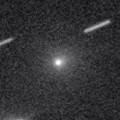
|
Now it is bright as 11.7 mag (Oct. 5, Katsumi Yoshimoto). It keeps locating extremely low until November in the Southern Hemisphere.
Date(TT) R.A. (2000) Decl. Delta r Elong. m1 Best Time(A, h)
Oct. 8 10 21.32 7 27.7 2.105 1.495 40 12.1 4:36 (276, 21)
Oct. 15 10 40.30 5 26.0 2.099 1.519 42 12.5 4:41 (280, 23)
|
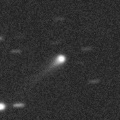
|
It brightened very rapidly and became brighter than expected. Now it is very bright as 12.9 mag (Oct. 4, Chris Wyatt). It will be unobservable in November in the Southern Hemisphere, or in December in the Northern Hemisphere.
Date(TT) R.A. (2000) Decl. Delta r Elong. m1 Best Time(A, h)
Oct. 8 16 17.02 -16 48.0 2.463 1.985 50 12.3 18:58 ( 56, 15)
Oct. 15 16 33.65 -17 1.0 2.515 1.985 47 12.3 18:49 ( 57, 14)
|
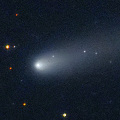
|
Now it is 12.5 mag (Oct. 5, Chris Wyatt). It will be getting higher gradually after this, but it will be fading.
Date(TT) R.A. (2000) Decl. Delta r Elong. m1 Best Time(A, h)
Oct. 8 9 47.52 3 49.5 1.938 1.467 47 12.6 4:36 (284, 26)
Oct. 15 10 4.93 1 19.6 1.933 1.498 49 12.8 4:41 (289, 27)
|
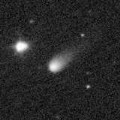
|
Now it is 13.3 mag (Sept. 5, Alan Hale). It is expected to brighten up to 7 mag in 2017 summer. In the Northern Hemisphere, it keeps observable in good condition until the highlight while the comet will be brightening. In the Southern Hemisphere, it is not observable until early 2017.
Date(TT) R.A. (2000) Decl. Delta r Elong. m1 Best Time(A, h)
Oct. 8 11 29.42 47 52.3 3.887 3.445 56 13.0 4:36 (229, 27)
Oct. 15 11 44.05 47 22.5 3.768 3.379 59 12.9 4:41 (231, 30)
|
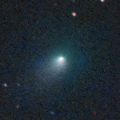
|
Now it is 13.5 mag (Oct. 5, Thomas Lehmann). It will be fading gradually after this. In the Northern Hemisphere, it keeps low after this. In the Southern Hemisphere, it will be getting lower after this, and it will be unobservable in December.
Date(TT) R.A. (2000) Decl. Delta r Elong. m1 Best Time(A, h)
Oct. 8 16 54.65 -28 21.2 1.914 1.673 60 13.0 18:58 ( 42, 12)
Oct. 15 17 16.92 -29 8.3 1.984 1.700 58 13.2 18:49 ( 41, 12)
|

|
It brightened up to 11 mag from spring to summer. Now it is not observable. It will be observable at 16 mag again in 2017 spring.
Date(TT) R.A. (2000) Decl. Delta r Elong. m1 Best Time(A, h)
Oct. 8 14 5.49 -10 27.4 2.697 1.774 18 13.3 18:58 ( 81, -6)
Oct. 15 14 23.72 -12 1.4 2.743 1.804 15 13.5 18:49 ( 80, -7)
|

|
It brightened up to 8-9 mag from winter to spring. Now it is fading. It has already faded down to 12.9 mag (July 23, Chris Wyatt). It is not observable now. It will appear in the morning sky at 14 mag in November in the Northern Hemisphere, or in December in the Southern Hemisphere.
Date(TT) R.A. (2000) Decl. Delta r Elong. m1 Best Time(A, h)
Oct. 8 12 34.22 0 55.0 4.912 3.927 8 13.5 4:36 (262,-10)
Oct. 15 12 39.31 -0 18.4 4.949 3.985 13 13.6 4:41 (267, -5)
|

|
Now it is faint as 16.8 mag (Oct. 8, Jean-Francois Soulier). It is observable in excellent condition in the Southern Hemisphere.
Date(TT) R.A. (2000) Decl. Delta r Elong. m1 Best Time(A, h)
Oct. 8 19 17.79 -24 46.1 5.766 5.898 92 13.6 18:58 ( 13, 29)
Oct. 15 19 19.93 -24 34.6 5.876 5.896 86 13.6 18:49 ( 17, 28)
|

|
Now it is so bright as 12.7 mag (Oct. 2, Juan Jose Gonzalez). It will be low in November, but it keeps observable in good condition for a while.
Date(TT) R.A. (2000) Decl. Delta r Elong. m1 Best Time(A, h)
Oct. 8 18 56.67 -4 59.2 1.662 1.938 89 13.6 18:58 ( 26, 46)
Oct. 15 18 50.37 -8 33.3 1.845 1.960 81 14.0 18:49 ( 32, 41)
|

|
It keeps unobservable for a long time. It will appear in the morning sky in December, when the comet will be fainter than 15 mag.
Date(TT) R.A. (2000) Decl. Delta r Elong. m1 Best Time(A, h)
Oct. 8 12 10.79 -6 36.7 2.502 1.533 10 13.8 4:36 (272, -9)
Oct. 15 12 31.69 -8 27.6 2.535 1.574 12 14.0 4:41 (275, -8)
|
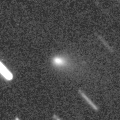
|
It had been lost for a long time over 200 years since its discovery in 1783. It brightened rapidly, and reached up to 13.9 mag in September (Spet. 1, Sandor Szabo). Now it is 14.5 mag (Oct. 5, Thomas Lehmann). It will be fading after this. It is observable in excellent condition for a while in the Northern Hemisphere. It will be unobservable in November in the Southern Hemisphere.
Date(TT) R.A. (2000) Decl. Delta r Elong. m1 Best Time(A, h)
Oct. 8 5 32.41 21 1.5 1.180 1.803 111 13.9 4:25 ( 0, 76)
Oct. 15 5 33.80 24 49.0 1.122 1.815 117 13.9 3:59 ( 0, 80)
|
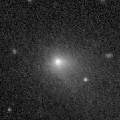
|
Now it is bright as 12.2 mag (Oct. 5, Chris Wyatt). Distant object, but it keeps observable at 13-14 mag for a long time from 2015 to 2016.
Date(TT) R.A. (2000) Decl. Delta r Elong. m1 Best Time(A, h)
Oct. 8 0 41.44 -3 0.6 3.991 4.979 170 14.0 23:31 ( 0, 52)
Oct. 15 0 39.34 -3 32.7 4.023 4.989 164 14.0 23:01 ( 0, 52)
|
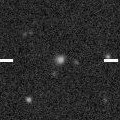
|
Now it is 16.4 mag (Aug. 12, Thomas Lehmann). It will be unobservable temporarily from summer to autumn. Then it will appear in the morning sky at 13 mag in December. It is expected to brighten up to 7 mag in 2017 spring. But it locates somewhat low at the high light.
Date(TT) R.A. (2000) Decl. Delta r Elong. m1 Best Time(A, h)
Oct. 8 12 44.32 -8 19.1 4.205 3.208 3 14.7 4:36 (268,-17)
Oct. 15 12 53.49 -9 11.8 4.118 3.130 6 14.5 4:41 (272,-13)
|

|
Now it is 14.2 mag (Sept. 24, Kunihiro Shima). It will be fading gradually after this. It will be unobservable soon. But it will appear in the morning sky again at 16 mag in winter.
Date(TT) R.A. (2000) Decl. Delta r Elong. m1 Best Time(A, h)
Oct. 8 15 47.01 12 29.2 4.051 3.441 46 14.6 18:58 ( 86, 27)
Oct. 15 15 52.80 10 36.7 4.156 3.485 42 14.7 18:49 ( 86, 24)
|

|
It brightened up to 6 mag from autumn to winter. Now it is fading. It has already faded down to 14.6 mag (Sept. 9, Katsumi Yoshimoto). It is observable in good condition in the Northern Hemisphere. It is not observable after this in the Southern Hemisphere.
Date(TT) R.A. (2000) Decl. Delta r Elong. m1 Best Time(A, h)
Oct. 8 5 41.99 55 16.3 4.181 4.545 105 14.7 4:36 (180, 70)
Oct. 15 5 32.52 55 56.6 4.151 4.617 111 14.7 3:59 (180, 69)
|
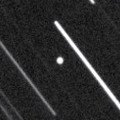
|
Now it is 14.9 mag (Sept. 29, Sandor Szabo). In the Northern Hemisphere, it will be observable at 15 mag in good condition from September to October. In the Southern Hemisphere, it is not observable until November.
Date(TT) R.A. (2000) Decl. Delta r Elong. m1 Best Time(A, h)
Oct. 8 20 53.89 77 21.3 0.425 1.164 102 14.8 19:51 (180, 48)
Oct. 15 21 53.70 64 7.0 0.474 1.264 113 14.9 20:18 (180, 62)
|
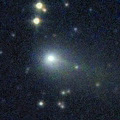
|
It brightened up to 12.5 mag in summer (Aug. 3, Marco Goiato). Now it is fading. It has already faded down to 14.0 mag (Sept. 28, Chris Wyatt). It keeps observable in good condition for a while.
Date(TT) R.A. (2000) Decl. Delta r Elong. m1 Best Time(A, h)
Oct. 8 20 59.26 -17 25.8 2.144 2.750 117 14.9 19:50 ( 0, 38)
Oct. 15 21 3.71 -17 21.7 2.252 2.776 111 15.0 19:27 ( 0, 38)
|
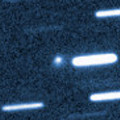
|
Now it is 15.8 mag (Sept. 24, Kunihiro Shima). It will brighten up to 14 mag from winter to spring in 2017, and it will be observable in excellent condition in the Northern Hemisphere. In the Southern Hemisphere, it keeps extremely low until November, and it will be low also around the higlight.
Date(TT) R.A. (2000) Decl. Delta r Elong. m1 Best Time(A, h)
Oct. 8 9 33.00 26 41.4 2.833 2.466 58 15.3 4:36 (263, 41)
Oct. 15 9 46.95 26 19.3 2.753 2.456 62 15.2 4:41 (266, 44)
|
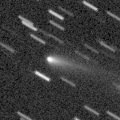
|
Now it is 14.9 mag (Sept. 24, Kunihiro Shima). It will be observable at 15-16 mag in good condition from autumn to winter. It locates somewhat low in the Southern Hemisphere.
Date(TT) R.A. (2000) Decl. Delta r Elong. m1 Best Time(A, h)
Oct. 8 4 44.12 32 33.4 1.931 2.586 120 15.2 3:37 ( 0, 88)
Oct. 15 4 45.46 33 5.8 1.875 2.599 126 15.2 3:11 ( 0, 88)
|

|
It has been lost since its discovery in 1978. In 2016, it is expected to return in excellent condition from autumn to winter.
Date(TT) R.A. (2000) Decl. Delta r Elong. m1 Best Time(A, h)
Oct. 8 20 14.35 -29 35.4 0.697 1.350 104 15.5 19:06 ( 0, 26)
Oct. 15 20 31.34 -28 14.6 0.704 1.327 101 15.3 18:55 ( 0, 27)
|
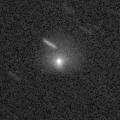
|
It has brightened in outburst up to 14 mag twice, in 2006 January and 2011 May. Third outburst occured on Aug. 28, and it brightened up to 14.8 mag (Aug. 30, Juan Jose Gonzalez). It is bright as 15.4 mag still now (Sept. 29, Sandor Szabo). It is observable in good condition for a while.
Date(TT) R.A. (2000) Decl. Delta r Elong. m1 Best Time(A, h)
Oct. 8 1 15.87 5 37.1 5.348 6.344 174 15.4 0:10 ( 0, 61)
Oct. 15 1 13.32 5 19.1 5.361 6.357 176 15.5 23:35 ( 0, 60)
|
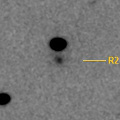
|
Now it is very bright as 15.6 mag (Sept. 11, Hidetaka Sato). It will be observable at 11 mag for a long time from 2017 to 2018. Now it is observable in excellent condition in the Southern Hemisphere. But it keeps low for a while in the Northern Hemisphere.
Date(TT) R.A. (2000) Decl. Delta r Elong. m1 Best Time(A, h)
Oct. 8 3 45.75 -40 35.6 5.532 6.083 119 15.6 2:39 ( 0, 14)
Oct. 15 3 42.15 -41 1.2 5.460 6.032 120 15.5 2:08 ( 0, 14)
|

|
Now it is 15.2 mag (Sept. 23, Kunihiro Shima). It will brighten up to 14 mag from summer to winter in 2017. Then it will be observable in excellent condition in the Northern Hemisphere. In the Southern Hemisphere, it is hardly observable around the highlight.
Date(TT) R.A. (2000) Decl. Delta r Elong. m1 Best Time(A, h)
Oct. 8 23 21.61 -16 20.8 3.640 4.518 147 15.9 22:11 ( 0, 39)
Oct. 15 23 14.72 -15 46.5 3.661 4.475 140 15.8 21:37 ( 0, 39)
|
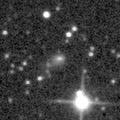
|
Now it is 16.2 mag (Aug. 31, Sandor Szabo). It will be observable at 13 mag for a long time from 2017 to 2018. In 2016, it keeps observable at 16 mag in good condition until autumn.
Date(TT) R.A. (2000) Decl. Delta r Elong. m1 Best Time(A, h)
Oct. 8 18 32.16 -8 54.4 5.682 5.657 83 16.1 18:58 ( 32, 41)
Oct. 15 18 31.26 -8 46.6 5.762 5.615 76 16.1 18:49 ( 37, 39)
|
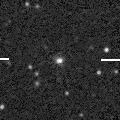
|
Now it is 16.1 mag (Sept. 7, Alexander Baransky). It will brighten up to 15 mag in winter. But it will be getting lower gradually after autumn.
Date(TT) R.A. (2000) Decl. Delta r Elong. m1 Best Time(A, h)
Oct. 8 21 55.66 -9 59.9 1.418 2.220 132 16.3 20:46 ( 0, 45)
Oct. 15 21 53.84 -9 27.7 1.444 2.179 125 16.2 20:16 ( 0, 46)
|

|
Now it is 15.8 mag (Sept. 30, Sandor Szabo). It will brighten up to 13 mag and will be observable in good condition in 2017 summer. In 2016, it keeps observable until winter when it will brighten up to 15.5 mag. It locates somewhat low in the Southern Hemisphere.
Date(TT) R.A. (2000) Decl. Delta r Elong. m1 Best Time(A, h)
Oct. 8 2 42.34 31 16.9 3.374 4.226 144 16.4 1:36 ( 0, 86)
Oct. 15 2 28.82 30 49.2 3.266 4.177 152 16.3 0:55 ( 0, 86)
|
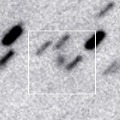
|
Now it is 16.5 mag (Apr. 5, Yasukazu Ikari). It keeps 16-17 mag for a long time from 2016 to 2019. It keeps locating near by the equator.
Date(TT) R.A. (2000) Decl. Delta r Elong. m1 Best Time(A, h)
Oct. 8 9 11.65 2 35.2 10.257 9.739 56 16.3 4:36 (292, 32)
Oct. 15 9 14.02 2 24.1 10.153 9.732 62 16.3 4:41 (298, 37)
|

|
Now it is 17.8 mag (Sept. 24, Kunihiro Shima). It will be getting higher after this, and it will be observable at 17 mag in good condition in winter.
Date(TT) R.A. (2000) Decl. Delta r Elong. m1 Best Time(A, h)
Oct. 8 10 28.74 8 0.5 2.853 2.170 39 16.5 4:36 (274, 20)
Oct. 15 10 42.04 6 57.3 2.821 2.192 42 16.6 4:41 (278, 23)
|
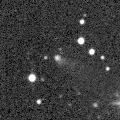
|
It brightened rapidly, and reached up to 16.3 mag now (Sept. 7, Alexander Baransky). It is observable at 16.5 mag in good condition from autumn to winter.
Date(TT) R.A. (2000) Decl. Delta r Elong. m1 Best Time(A, h)
Oct. 8 22 36.66 -11 27.8 1.865 2.719 141 16.5 21:27 ( 0, 44)
Oct. 15 22 34.58 -11 5.7 1.912 2.704 134 16.5 20:57 ( 0, 44)
|
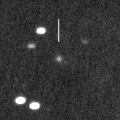
|
Now it is 18.5 mag (Aug. 11, CAO, San Pedro de Atacama). It will be observable at 16 mag in good condition from autumn to winter. It locates low in the Southern Hemisphere.
Date(TT) R.A. (2000) Decl. Delta r Elong. m1 Best Time(A, h)
Oct. 8 7 19.77 24 5.3 3.800 3.874 86 16.7 4:36 (291, 66)
Oct. 15 7 23.92 24 7.1 3.687 3.866 92 16.6 4:41 (302, 72)
|

|
It brightened up to 15 mag in early 2016. Now it is fading. In the Northern Hemisphere, it keeps observable in good condition for a long time until 2017 autumn when the comet will be fainter than 18 mag. It will never be observable after this in the Southern Hemisphere.
Date(TT) R.A. (2000) Decl. Delta r Elong. m1 Best Time(A, h)
Oct. 8 12 49.54 68 10.0 6.060 5.865 74 16.6 4:36 (204, 26)
Oct. 15 13 4.70 67 39.8 6.046 5.889 76 16.6 4:41 (205, 28)
|

|
Now it is 16.5 mag (Aug. 31, Sandor Szabo). It keeps 16.5 mag from 2016 to 2017. It is observable in good condition in the Northern Hemisphere. In the Southern Hemisphere, it will never be observable again.
Date(TT) R.A. (2000) Decl. Delta r Elong. m1 Best Time(A, h)
Oct. 8 16 44.07 32 52.9 6.588 6.260 66 16.8 18:58 (102, 48)
Oct. 15 16 47.88 32 42.0 6.626 6.257 64 16.8 18:49 (103, 45)
|
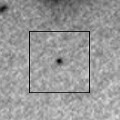
|
First return of a new periodic comet discovered in 2007. Now it is 19.4 mag (Sept. 1, K. Sarneczky, P. Szekely). It was expected to brighten up to 16.5 mag and will be observable in good condition from autumn to winter. But actually, it is fainter than predicted by 1.5 mag.
Date(TT) R.A. (2000) Decl. Delta r Elong. m1 Best Time(A, h)
Oct. 8 3 42.94 -12 42.7 1.652 2.457 134 17.0 2:36 ( 0, 42)
Oct. 15 3 41.48 -13 15.0 1.593 2.434 138 16.9 2:07 ( 0, 42)
|

|
Now it is 17.8 mag (Sept. 1, Kunihiro Shima). It will brighten up to 15 mag and will be observable in good condition from autum to winter in 2017. In the Northern Hemisphere, it keeps observable in good condition for a long time while the comet will be brightening. It is not observable until 2017 summer in the Southern Hemisphere.
Date(TT) R.A. (2000) Decl. Delta r Elong. m1 Best Time(A, h)
Oct. 8 4 46.71 59 30.6 5.109 5.544 110 17.0 3:41 (180, 65)
Oct. 15 4 35.65 59 46.4 4.982 5.509 117 16.9 3:02 (180, 65)
|
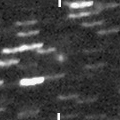
|
Now it is 17.2 mag (Sept. 7, Alexander Baransky). It keeps 16-17 mag and keeps observable in good condition until autumn.
Date(TT) R.A. (2000) Decl. Delta r Elong. m1 Best Time(A, h)
Oct. 8 18 15.60 -12 46.8 2.516 2.526 79 16.9 18:58 ( 34, 35)
Oct. 15 18 25.02 -12 53.7 2.584 2.511 74 17.0 18:49 ( 36, 34)
|
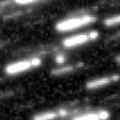
|
Now it is 16.9 mag (July 30, Yasukazu Ikari). It will brighten up to 16 mag and will be observable in good condition in 2017. In 2016, it is observable in excellent condition in the Southern Hemisphere, but it keeps low in the Northern Hemisphere.
Date(TT) R.A. (2000) Decl. Delta r Elong. m1 Best Time(A, h)
Oct. 8 18 56.83 -34 8.1 3.022 3.134 87 17.2 18:58 ( 15, 19)
Oct. 15 19 3.65 -33 27.6 3.101 3.118 81 17.2 18:49 ( 18, 19)
|

|
It brightened up to 15 mag from late 2014 to early 2016. Now it is fading slowly. Now it is 16.7 mag (Sept. 2, Kunihiro Shima). In the Northern Hemisphere, it will be observable at 16-17 mag in autumn in good condition. It locates extremely low in the Southern Hemisphere.
Date(TT) R.A. (2000) Decl. Delta r Elong. m1 Best Time(A, h)
Oct. 8 21 50.35 41 4.2 4.662 5.311 125 17.2 20:40 (180, 84)
Oct. 15 21 42.40 40 1.9 4.746 5.345 122 17.3 20:04 (180, 85)
|

|
Now it is 18.1 mag (Oct. 6, Kunihiro Shima). It will pass the perihelion on Mar. 10, 2017. In the Northern Hemisphere, it keeps observable in the evening sky until late February while the comet will be brightening up to 8.5 mag. In the Southern Hemisphere, it will appear in the morning sky in late March at 8 mag, then it keeps observable while the comet will be fading.
Date(TT) R.A. (2000) Decl. Delta r Elong. m1 Best Time(A, h)
Oct. 8 0 6.02 13 43.1 1.373 2.354 165 17.2 22:55 ( 0, 69)
Oct. 15 23 52.29 12 33.4 1.334 2.289 157 17.2 22:14 ( 0, 68)
|

|
Now it is 17.2 mag (Sept. 2, Alexander Baransky). It tends to be brightest after the perihelion passage. It is observable at 17.5 mag in good condition from autumn to winter.
Date(TT) R.A. (2000) Decl. Delta r Elong. m1 Best Time(A, h)
Oct. 8 2 37.22 1 41.5 2.128 3.059 154 17.3 1:31 ( 0, 57)
Oct. 15 2 33.53 1 6.8 2.109 3.067 160 17.3 1:00 ( 0, 56)
|

|
It will pass the perihelion in 2019. However, it has not been brightening since the discovery in 2010. Now it is 18.1 mag (Aug. 10, D. Buczynski). It keeps observable in excellent condition in the Northern Hemisphere. It is not observable in the Southern Hemisphere.
Date(TT) R.A. (2000) Decl. Delta r Elong. m1 Best Time(A, h)
Oct. 8 4 42.05 58 58.5 9.447 9.859 111 17.3 3:36 (180, 66)
Oct. 15 4 40.11 59 31.6 9.349 9.839 116 17.3 3:06 (180, 65)
|

|
Now it is 18.3 mag (Oct. 6, Kunihiro Shima). It will be observable at 17.5 mag in good condition in autumn.
Date(TT) R.A. (2000) Decl. Delta r Elong. m1 Best Time(A, h)
Oct. 8 22 51.76 2 12.1 1.563 2.474 149 17.4 21:42 ( 0, 57)
Oct. 15 22 50.33 1 45.2 1.588 2.452 141 17.4 21:13 ( 0, 57)
|
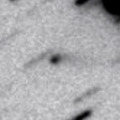
|
It was observed at 17 mag last winter. It will be observable at 17 mag again next winter. It is observable in good condition in the Northern Hemisphere. But it locates low in the Southern Hemisphere.
Date(TT) R.A. (2000) Decl. Delta r Elong. m1 Best Time(A, h)
Oct. 8 10 16.62 12 19.1 4.400 3.737 43 17.4 4:36 (272, 25)
Oct. 15 10 24.47 12 39.3 4.332 3.748 48 17.4 4:41 (276, 30)
|

|
Now it is 18.7 mag (Aug. 4, Jean-Francois Soulier). In the Northern Hemisphere, it is observable at 17.5 mag in excellent condition from autumn to winter. It keeps extremely low in the Southern Hemisphere.
Date(TT) R.A. (2000) Decl. Delta r Elong. m1 Best Time(A, h)
Oct. 8 8 49.73 30 25.0 2.343 2.192 68 17.5 4:36 (263, 51)
Oct. 15 9 4.58 30 40.3 2.281 2.202 72 17.4 4:41 (265, 55)
|
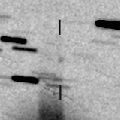
|
First return of a new periodic comet discovered in 2005. Now it is 18.9 mag (Aug. 28, K. Sarneczky, P. Szekely). In the Northern Hemisphere, it will be observable at 17 mag in excellent condition in winter. It locates somewhat low in the Southern Hemisphere.
Date(TT) R.A. (2000) Decl. Delta r Elong. m1 Best Time(A, h)
Oct. 8 4 1.52 24 7.6 2.060 2.825 131 17.6 2:55 ( 0, 79)
Oct. 15 4 1.04 24 6.3 1.996 2.823 138 17.5 2:27 ( 0, 79)
|
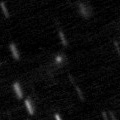
|
Now it is 18.0 mag (July 24, CAO, San Pedro de Atacama). It keeps 17 mag for a long time in 2016, and it will be observable in excellent condition in the Southern Hemisphere. It is hardly observable in the Northern Hemisphere.
Date(TT) R.A. (2000) Decl. Delta r Elong. m1 Best Time(A, h)
Oct. 8 1 1.88 -51 45.6 3.030 3.663 122 17.5 23:50 ( 0, 3)
Oct. 15 0 40.94 -50 55.8 3.089 3.689 119 17.6 23:01 ( 0, 4)
|
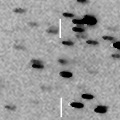
|
Now it is 18.2 mag (Aug. 25, Michael Jager). In the Northern Hemisphere, it will be observable at 17 mag in excellent condition in winter. It locates low in the Southern Hemisphere.
Date(TT) R.A. (2000) Decl. Delta r Elong. m1 Best Time(A, h)
Oct. 8 7 0.46 31 51.8 3.204 3.388 91 17.6 4:36 (276, 74)
Oct. 15 7 6.22 32 3.2 3.108 3.387 97 17.6 4:41 (282, 79)
|

|
Peculiar asteroid with a comet-like orbit. It is observable at 18 mag in good condition in October.
Date(TT) R.A. (2000) Decl. Delta r Elong. m1 Best Time(A, h)
Oct. 8 3 5.84 -4 40.9 2.023 2.904 145 17.8 2:00 ( 0, 51)
Oct. 15 2 54.94 -8 53.3 1.992 2.903 150 17.7 1:21 ( 0, 46)
|

|
It brightened up to 13-14 mag from 2014 to 2015. Now it is fading. It has already faded down to 17.1 mag (Sept. 23, Kunihiro Shima). It will be fainter than 18 mag in October.
Date(TT) R.A. (2000) Decl. Delta r Elong. m1 Best Time(A, h)
Oct. 8 23 1.59 -7 17.8 5.037 5.914 148 17.8 21:51 ( 0, 48)
Oct. 15 23 0.02 -7 34.2 5.147 5.959 141 17.8 21:22 ( 0, 48)
|

|
Now it is 17.5 mag (Sept. 23, iTelescope Observatory, Siding Spring). It keeps 17 mag for a long time from 2016 autumn to 2017 summer, and it keeps observable good condition all through that period in the Southern Hemisphere. In the Northern Hemisphere, it will be unobservable soon, then it will never be observable again.
Date(TT) R.A. (2000) Decl. Delta r Elong. m1 Best Time(A, h)
Oct. 8 4 56.35 -35 40.9 2.334 2.834 109 17.9 3:49 ( 0, 19)
Oct. 15 4 52.86 -40 1.3 2.284 2.802 111 17.8 3:18 ( 0, 15)
|

|
It keeps observable at 17.5 mag in good condition from autumn to winter.
Date(TT) R.A. (2000) Decl. Delta r Elong. m1 Best Time(A, h)
Oct. 8 3 42.10 18 32.8 2.291 3.101 137 17.9 2:35 ( 0, 74)
Oct. 15 3 40.45 18 16.3 2.226 3.095 144 17.9 2:06 ( 0, 73)
|
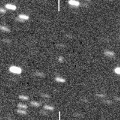
|
First return of a new periodic comet discovered in 2008. Now it is 18.8 mag (Sept. 7, Alexander Baransky), fainter than this ephemeris.
Date(TT) R.A. (2000) Decl. Delta r Elong. m1 Best Time(A, h)
Oct. 8 20 10.39 -18 56.3 2.645 3.071 105 17.9 19:01 ( 0, 36)
Oct. 15 20 14.61 -18 42.0 2.737 3.068 99 17.9 18:49 ( 3, 36)
|

|
First return of a new periodic comet which brightened up to 16.5 mag in 2008. The condition of this apparition is very good. It was expected to brighten up to 15.5 mag in autumn and will be observable in good condition. But actually, it is 17.3 mag (Oct. 6, Kunihiro Shima), fainter than originally expected by 2-3 mag.
Date(TT) R.A. (2000) Decl. Delta r Elong. m1 Best Time(A, h)
Oct. 8 23 34.34 -10 56.8 1.386 2.325 153 17.9 22:24 ( 0, 44)
Oct. 15 23 28.02 -9 39.3 1.420 2.319 146 17.9 21:50 ( 0, 46)
|
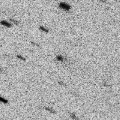
|
Now it is 17.0 mag (Aug. 31, Kunihiro Shima). It is observable at 18 mag in excellent condition in autumn.
Date(TT) R.A. (2000) Decl. Delta r Elong. m1 Best Time(A, h)
Oct. 8 1 26.25 7 54.7 1.691 2.684 171 17.9 0:20 ( 0, 63)
Oct. 15 1 21.34 7 37.6 1.704 2.701 179 18.0 23:43 ( 0, 63)
|
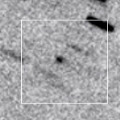
|
Now it is 19.1 mag (Oct. 6, Kunihiro Shima). It is observable at 18 mag in excellent condition in autumn.
Date(TT) R.A. (2000) Decl. Delta r Elong. m1 Best Time(A, h)
Oct. 8 0 55.65 3 2.9 1.626 2.624 177 17.9 23:45 ( 0, 58)
Oct. 15 0 50.86 2 48.1 1.647 2.636 170 18.0 23:13 ( 0, 58)
|
|
![]()
 174P/(60558) 2000 EC98 ( Echeclus )
174P/(60558) 2000 EC98 ( Echeclus ) C/2016 R2 ( PanSTARRS )
C/2016 R2 ( PanSTARRS ) C/2016 N4 ( MASTER )
C/2016 N4 ( MASTER ) C/2015 O1 ( PanSTARRS )
C/2015 O1 ( PanSTARRS ) 93P/Lovas 1
93P/Lovas 1 C/2015 VL62 ( Lemmon-Yeung-PanSTARRS )
C/2015 VL62 ( Lemmon-Yeung-PanSTARRS ) C/2014 B1 ( Schwartz )
C/2014 B1 ( Schwartz ) 118P/Shoemaker-Levy 4
118P/Shoemaker-Levy 4 188P/LINEAR-Mueller
188P/LINEAR-Mueller 74P/Smirnova-Chernykh
74P/Smirnova-Chernykh C/2013 V4 ( Catalina )
C/2013 V4 ( Catalina ) C/2014 OE4 ( PanSTARRS )
C/2014 OE4 ( PanSTARRS ) P/2016 R1 ( Catalina )
P/2016 R1 ( Catalina ) C/2015 V1 ( PanSTARRS )
C/2015 V1 ( PanSTARRS ) 219P/LINEAR
219P/LINEAR 47P/Ashbrook-Jackson
47P/Ashbrook-Jackson C/2014 A4 ( SONEAR )
C/2014 A4 ( SONEAR ) 2P/Encke
2P/Encke 136P/Mueller 3
136P/Mueller 3 C/2010 U3 ( Boattini )
C/2010 U3 ( Boattini ) 343P/2016 P3 ( NEAT-LONEOS )
343P/2016 P3 ( NEAT-LONEOS ) C/2015 X7 ( ATLAS )
C/2015 X7 ( ATLAS ) 33P/Daniel
33P/Daniel P/2016 Q1 ( Read )
P/2016 Q1 ( Read ) C/2015 B2 ( PanSTARRS )
C/2015 B2 ( PanSTARRS ) P/2015 TP200 ( LINEAR )
P/2015 TP200 ( LINEAR ) 2016 PN66
2016 PN66 C/2012 F3 ( PanSTARRS )
C/2012 F3 ( PanSTARRS ) C/2016 S1 ( PanSTARRS )
C/2016 S1 ( PanSTARRS ) 128P/Shoemaker-Holt 1
128P/Shoemaker-Holt 1 340P/2016 N2 ( Boattini )
340P/2016 N2 ( Boattini ) 338P/2016 N1 ( McNaught )
338P/2016 N1 ( McNaught ) 341P/2016 N3 ( Gibbs )
341P/2016 N3 ( Gibbs ) 208P/McMillan
208P/McMillan![]()




















































